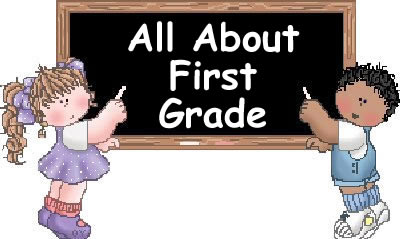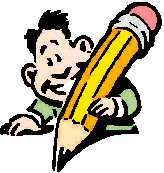
Snapshot of a Transition First Grader
Here are some general development milestones to help you understand your child's progress over the school year. Keep in mind that every child is different and may not fit perfectly into this framework.
Ages and Stages (Brought to you by the American School Counselor Association) The average six-year-old is extremely egocentric and wants to be the center of attention. She/He:
- wants to be "best" and "first"
- has boundless energy
- may be oppositional, silly, brash and critical
- cries easily; shows a variety of tension-releasing behavior
- is attached to the teacher
- has difficulty being flexible
- often considers fantasy real
- Develops a positive, realistic self-concept.
- Learns to respect himself.
- Begins to understand his own uniqueness.
- Gains awareness of his feelings.
- Learns to express feelings.
- Learns how to participate in groups.
- Begins to learn from his mistakes.
This year lays the foundation for future learning. Development of reading and writing skills are critical during first grade. Students learn the building blocks to reading through five components:
In addition to aquiring these academic skills, students will also develop other classroom and learning skills such as listening and following directions, working independently at a desk, copying work off the board, working quietly without disrupting others in the class and taking responsibility for their actions and learning in the classroom.
Students who come to first grade well prepared will have the best chance for success. Students should start first grade with the following skills:
-
recocognizes lower and uppercase letters
-
know the sounds that go with each letter
-
identify and genorate rhyming words
-
identify and write numbers 0 - 20
-
identify numbers in isolation
-
count by ones, fives, and tens to 100
-
name the days of the week and months of the year
-
identify the basic shapes and colors
-
identify color words
-
hold and use scissors, pencils and crayons correctly
-
know telephone number and address
-
know parents' names
-
spell and write their own first and last name
If your child has not mastered any of these skills, it is very important that you spend some time at home working on them. It will be time well spent and will have a significant effect on your child's ability to master new first grade skills.
At PES we begin by reviewing skills for the first 3 weeks. During this time students are evaluated to determine their mastery level and how individual needs can best be met. Also during this time, all students are given the AIMS test. This is a one-on-one test administered by Ms. Sandy, our Literacy Leader or a trained instructional assistant. This test evaluates progress and learning in the five domains of reading. This test is baseline. It is given in T-1 3 times a year. Students are also assessed in the classroom throughout the year in all academic areas to determine if students are learning necessary skills. Student progress is reported to parents via weekly work sent home, the mid-term progress reports and the end of the nine weeks report card.
As I state in my Heart to Heart letter to parents, the most fundmental thing you can do as a parent to help your child succeed is be involved at home. Most importantly, participate in your child's daily reading. A child who leaves T-1 with a solid beginning in reading skills has a significant advantage when he/she goes on to 1st grade. Read with your child each day. Read to them and have your child practice reading aloud to you. After we begin our reading series, your child well be bringing home a story to practice each night that can be used for read aloud practice. Read aloud to your child as well to let him/her know that you value reading. When you read aloud to your child you provide an example of good reading with inflection and fluency.
Our current curriculum was written by our Literacy Leader, Sandy Fuchs and was established from standards set by the State of Tennessee Department of Education. Access actual curriculum objectives from the curriculum page on this site. Below is a brief overview of some of the content taught in T-1:


